Museum of the North
Yesterday, the group embarked on our first field trip of the week and headed out to the University of Alaska Museum of the North. From Alaskan geologic history exhibits, to extensive collections of perfectly intact native artifacts and tools, to life-sized samples of Alaskan wildlife, the "Gallery of Alaska" wing had something there for everyone. I highly recommend a visit if you ever make it to Fairbanks!

The museum opened its first exhibit in 1929, and has served Alaska as a repository for natural and cultural history artifacts/specimens ever since. In 2005, a beautiful new wing was added to the building, doubling its size and capacity to house and display these precious and awesome artifacts.
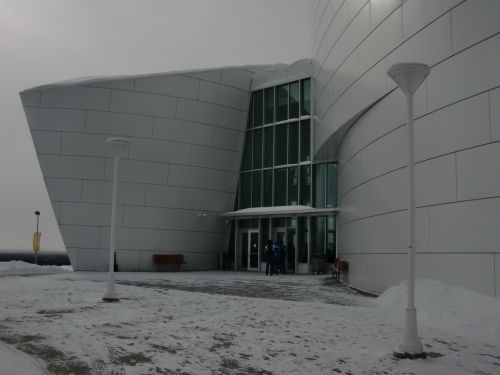
"Hibernation and the Science of Cold"
PolarTREC Teachers were given a special tour of the "Hibernation and the Science of Cold" exhibit. Alicia Gillian, from Tulsa, Oklahoma, is headed out on her PolarTREC Expedition this summer with researcher Cory Williams from University of Alaska Anchorage. Their team will be studying the circadian rhythms (sometimes referred to as the "internal body clock") of Arctic Ground Squirrels at the Toolik Field Station in Alaska. Their project is featured in this exhibit, and we were given a little bit of 'special treat' from the researchers while we visited.
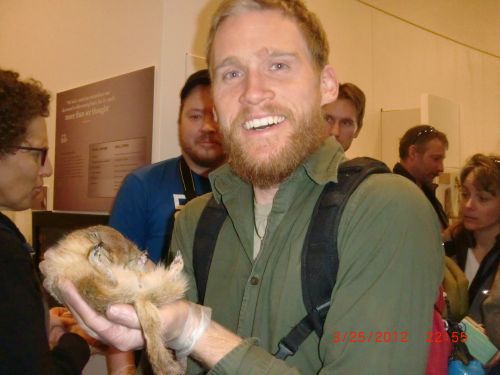
So you might be asking, "What in the world do hibernating squirrels have to do with polar science or climate change?
Well, quite a lot, really.
You see, circadian rhythms are vital to organisms in a number of ways. From thermoregulation, to brain activity, to migratory behaviors, these internal clocks are highly important for the day-to-day, or even month-to-month routine of an animal.
As surface air temperatures continue to rise in the Polar Regions, the timing of various insect hatchings may begin to occur earlier than normal. (Oh, by the way, the study of the timing of life cycles for plants and animals is called phenology, and organisms within a particular food web are quite in tune with the phenology of other organisms in the food web; especially in predator-prey relationships.)
Migratory birds that travel very long distances to rear their young depend on insect hatchings occurring at a very particular time in order to feed their new babies. They may not be able to find enough of that food if the insect hatch occurs earlier than expected. These negative effects on this particular trophic level could potentially then affect the rest of the food chain as a whole. Get the idea?
So, back to the ground squirrels.
What creates most 24-hour circadian internal clocks anyway? THE SUN! And when the cycle of sunlight and darkness gets changed, an organism's circadian rhythm is likely to respond with changes in physiology or behavior.
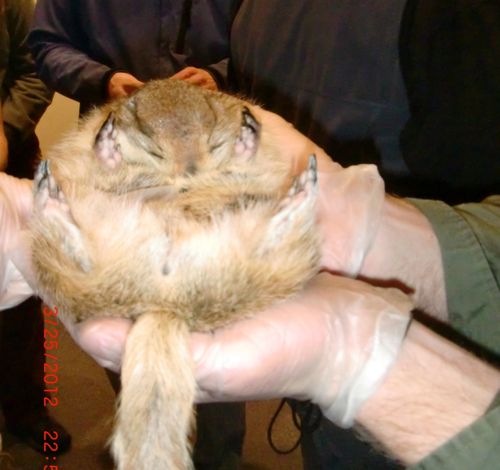
Arctic Ground Squirrels are intriguing to researchers in this regard because during the 24-hours of sunlight experienced during the Arctic summers, when some animals in the Arctic lose track of their internal clocks, these little critters still somehow manage to maintain a steady circadian rhythm! In the midst of all that sun, they still demonstrate their regular old night-day activity schedule. Cool, huh?
Interested in learning more? If I were you, I would follow Alicia's PolarTREC Expedition to the Toolik Field Station this summer!
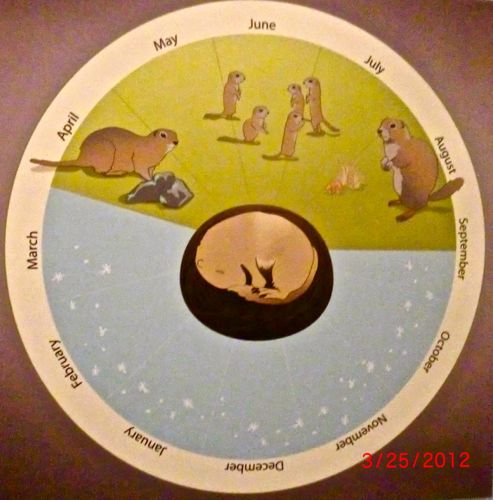
Human Hibernation?
All of this talk about hibernation at the exhibit got me thinking, "What would it take for a human to hibernate, or even partially hibernate, in the Arctic?"
Thanks to the exhibit, that answer was a bit easier to find than I expected.
First, it would take food. LOTS of food.
Here's a summary of a simple, yet eye-opening analogy that the exhibit used: At 0 degrees F, a chickadee must consume roughly 80% of its body weight each day just to stay alive. While they never reach "true" hibernation, they do significantly lower their body temperature each night to conserve precious energy.
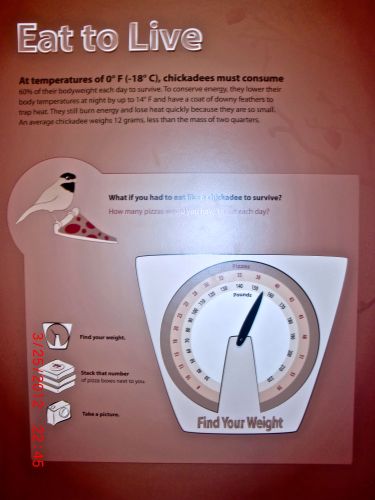
If I wanted to do that to survive a day in the Arctic like a chickadee, it would take pizza. LOTS of pizza. Approximately 39 pizzas to be precise.

And I LOVE pizza!

Well, let's be honest, eating 39 pizzas a day to make it through a mild winter day in the Arctic is not realistic; no matter how much I love pizza. So what's my other option?
Curl up, cool down, and become torpid!
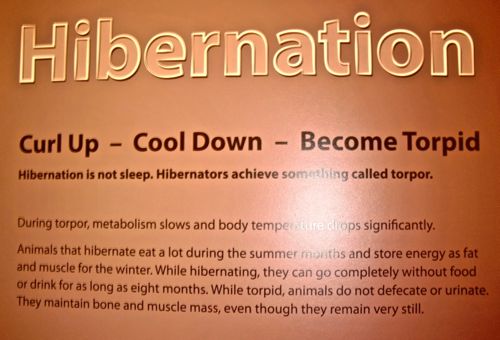
Thankfully, the exhibit had a nice, cozy spot for me to do just that. And at the end of a long day at the museum, a nice peaceful rest was just what I needed!
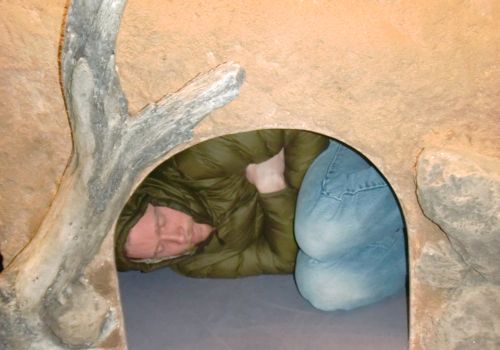


Comments